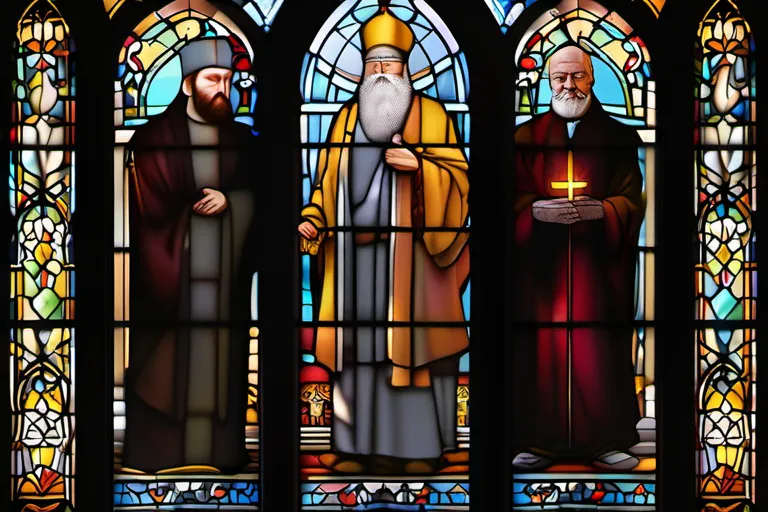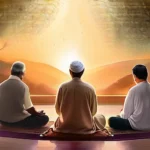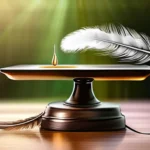Exploring the historical roots, roles, and development of religious leaders throughout history.
From ancient priests to modern-day clergy, the role of a minister of religion has evolved significantly over time. In this article, we delve into the fascinating origins and evolution of these spiritual leaders, shedding light on their historical roles and the impact they have had on societies throughout history.
The Emergence of Religious Leaders
The origins of religious leaders can be traced back to some of humanity’s earliest civilizations, where spiritual practices and beliefs were integral to daily life. Imagine these ancient societies as vast fields, where religion was the soil that nourished every aspect of their existence—politics, culture, and social structures all intertwined like the roots of a tree. How did these early religious leaders emerge from the fertile ground of spirituality?
Consider the first priests in ancient Mesopotamia, who were often seen as intermediaries between humans and gods. Were they not like the guardians of a sacred gate, ensuring that the flow of blessings from the divine realm reached the common people? These early religious leaders were more than just spiritual guides; they held significant power within their communities, sometimes even rivaling political figures in influence.
In ancient Egypt, we see another example of the evolution of religious leadership. The pharaohs themselves were often deified as gods on earth, with priests and priestesses managing their temples and rituals. Here, religion became a central pillar of governance, much like how a lighthouse guides ships through treacherous waters—religion guided society’s moral compass.
As these civilizations grew, so too did the roles of religious leaders become more complex. They were not just caretakers of sacred texts or guardians of rituals; they became educators, healers, and even philosophers. Their influence extended beyond temples and shrines into every corner of life, shaping the very fabric of society.
Imagine a timeline stretching back millennia, where each dot represents a civilization’s unique take on religious leadership. From ancient Mesopotamia to Egypt, these points connect through a thread that weaves together the evolution of faith and governance. How did this thread evolve over time? What lessons can we draw from these early religious leaders as we look towards the future?
The Role of Religion in Ancient Societies
Imagine stepping back into ancient times, where religious leaders were not just spiritual guides but integral figures in shaping society itself. How did these individuals rise to prominence? And what roles did they play in politics, culture, and daily life?
In many early societies, religious leaders often served as intermediaries between the gods and the people, acting like bridges in a world where divine intervention was a common belief. They were not just spiritual guides but also played significant roles in governance and social order. One could wonder, how did these multifaceted roles evolve over time?
Consider the pharaohs of ancient Egypt; they were seen as gods themselves or direct descendants, combining religious authority with political power. This dual role created a complex tapestry where political decisions often had strong religious undertones, influencing everything from construction projects to agricultural practices. Were these rulers simply using religion for their own benefit, or was there genuine spiritual significance in their actions?
Similarly, in ancient Mesopotamia and the Indus Valley, religious leaders acted as cultural architects, shaping myths, rituals, and societal norms. They were often closely tied to economic activities like trade and agriculture, suggesting a deep integration of religion into daily life. How did this interplay between spirituality and practical matters shape the development of these ancient civilizations?
The roles of religious leaders in ancient societies were also reflected in their status within communities. They often held positions of high esteem, with significant influence over education, law, and social practices. This prominence raises questions about how they managed to maintain such power and what impact this had on the development of these societies.
As we explore further into history, it becomes clear that religious leaders were not just passive observers but active shapers of ancient worlds. They were architects of belief systems, policymakers in spiritual matters, and influencers in daily life. Their roles were multifaceted and deeply intertwined with the very fabric of society. How did these early leaders navigate such complex roles, and what lessons can we draw from their experiences?
The Development of Organized Religions
The Development of Organized Religions: Examine the emergence of organized religions and the role that religious leaders played in shaping these faiths.
Imagine stepping back into time, witnessing the birth of some of the world’s most profound beliefs. How did organized religions come to be? Were they mere reflections of human desire for order and meaning, or were they the products of divine intervention?
In the early days, religion was a private affair, closely tied to individual experiences and local traditions. However, as societies grew more complex, so too did their spiritual needs. This led to the emergence of organized religions with structured doctrines, rituals, and governance structures.
- Consider how the need for standardized beliefs gave rise to figures like priests and religious leaders who could provide guidance and consistency in a rapidly changing world.
The role of these early leaders was pivotal. They were not just spiritual guides but also cultural architects, shaping society’s values and norms. Were they more like guardians of wisdom or manipulators of the masses?
Take for instance the dea ima in ancient Rome; how did this position evolve from a simple religious title into one of significant political influence? And what about the early Christian church, with its apostles and bishops—how did they transform individual faiths into institutionalized beliefs?
The development of these roles wasn’t always smooth. There were conflicts over authority, interpretations, and practices. These challenges pushed religious leaders to innovate and adapt, leading to new doctrines and expanded organizational structures.
Reflect on how the concept of a minister of religion evolved from these early roles. Were they merely conduits for divine will or active shapers of society? The answers lie in their actions and the enduring impact of their teachings.
As we continue our journey through history, it becomes clear that organized religions and the leaders who shaped them have had a profound influence on human civilization. From the grand cathedrals to the humblest village shrines, these religious figures have left an indelible mark, guiding both personal faith and collective actions.
So, as we explore further into the roles of religious leaders in Medieval Europe, ponder how their early predecessors laid the groundwork for the complex religious landscapes that continue to shape our world today.
Religious Leaders in Medieval Europe
The origins and evolution of the minister of religion during the Middle Ages were as complex and multifaceted as the tapestry of medieval Europe itself. Imagine, if you will, a time when the lines between church and state were blurred, where religious leaders wielded significant power not just in spiritual matters but also in governance and social structures.
During the early centuries of the Middle Ages, the roles of priests, monks, and nuns were deeply intertwined with the fabric of society. These individuals served as keepers of knowledge, custodians of the sacred texts that few could read or understand without their guidance. They acted as counselors to the nobility, mediators between the divine and the human, and often as healers and educators within their communities.
Their influence was profound; in many cases, they were the only literate individuals available to record events, write letters, and maintain historical records. This made them indispensable figures, not just in religious matters but also in administrative tasks. As the monastic orders grew in power and influence, these institutions became centers of learning and culture, often preserving knowledge that would otherwise have been lost during times of turmoil.
Consider the role of St. Benedict and his Rule for monks, which emphasized a life of prayer, work, and community living. This rule not only shaped monastic practices but also provided a model for organization and discipline that could be applied in many areas of society. The impact of such leaders was far-reaching, influencing everything from daily routines to broader societal norms.
As the Middle Ages progressed, these religious leaders faced new challenges and opportunities. The Church’s role expanded, with popes like Gregory VII initiating reforms aimed at increasing clerical discipline and reducing corruption within the church hierarchy. These efforts were met with resistance but also spurred significant changes in how the minister of religion was perceived and practiced.
In essence, the ministers of religion during this era were both guardians of tradition and innovators in response to changing times. Their influence extended beyond religious ceremonies into realms of governance, education, and social welfare. The complex roles they played shaped not only their own communities but also laid foundational stones for the religious leadership that would follow.
The Reformation and the Emergence of Protestantism
The Reformation and the Emergence of Protestantism: A Time of Great Change
Imagine stepping into a world where religious leaders were not just voices from the pulpit but catalysts for societal transformation. The 16th century was such a time, marked by the Reformation, which shook the very foundations of the Catholic Church and gave birth to Protestantism. How did this movement reshape the role of religious leaders?
The Reformation began as a critique of certain practices within the Catholic Church, but it quickly evolved into a broader questioning of church authority and doctrine. Figures like Martin Luther and John Calvin emerged as key voices, challenging the status quo with their radical ideas. They emphasized personal faith over ecclesiastical control, leading to significant changes in religious practice and belief.
These new Protestant leaders, known as ministers or pastors, took on a dual role: they were both spiritual guides and reformers. They spoke out against corruption, advocated for the bible‘s primacy, and encouraged laypeople to read scripture directly—a revolutionary concept at the time. How did these roles differ from those of medieval priests?
The rise of Protestant denominations created a diverse landscape of religious leadership. Ministers were not just leaders but also educators, preachers, and even sometimes political figures. Their influence extended beyond church walls into communities, shaping moral standards and social structures. This new form of leadership was seen as more accessible and relatable to the common people.
As we look at the origins and evolution of the minister of religion during this period, it’s clear that their role was far from static. They were innovators, adapting traditional roles to meet new challenges and needs. This transformation paved the way for the modern religious leader, setting the stage for further developments in the centuries to come.
How do you think the Reformation changed the dynamics between church and state? And what lessons can we draw from these early Protestant ministers as we look towards contemporary religious leadership?
Modern-Day Religious Leaders
As we step into the modern era, the role of religious leaders has evolved significantly from its ancient roots. Have you ever pondered how the humble shepherd who guided his flock became a symbol of spiritual leadership? The term ‘minister’ itself, derived from the Latin word ‘minister’, literally means servant or helper, reflecting the essence of these leaders throughout history.
Imagine stepping into a bustling church on a Sunday morning. The minister is not just delivering a sermon; they are guiding souls through their spiritual journey. From the early Christian clergy who served as community leaders to the modern-day ministers, their roles have transformed with societal changes. They no longer merely interpret scriptures but also address contemporary issues like social justice, environmental concerns, and personal ethics.
In many communities today, ministers act as a bridge between faith and the world around them. Consider how an imam or rabbi might engage in community service projects, educate youth on religious texts, or provide pastoral care during times of crisis. These roles are not just about spiritual guidance but also about providing emotional support and fostering social cohesion.
As we look at the evolution from ancient to modern religious leaders, one cannot help but marvel at how these individuals adapt their practices to meet the needs of their followers. It’s a journey that has seen them transition from purely religious figures to influencers in society, addressing both spiritual and societal challenges. In this ever-changing landscape, the minister’s role continues to grow, blending tradition with innovation.
Conclusion
 Understanding the origins and evolution of ministers of religion provides valuable insights into the role of faith in human society. By examining the development of religious leadership, we can gain a deeper appreciation for the cultural and spiritual significance of these figures.
Understanding the origins and evolution of ministers of religion provides valuable insights into the role of faith in human society. By examining the development of religious leadership, we can gain a deeper appreciation for the cultural and spiritual significance of these figures.











